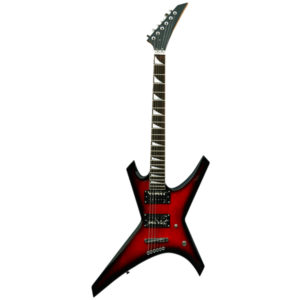Red forest
Myth 1: the bigger the distortion, the heavier the tone.
Many guitarists who play rock or heavy metal always think that the greater the distortion, the better the timbre. This is not right! Of course, you can make the sound sound howl, but you have to know. The greater the distortion, the more scattered the sound will be, and you will lose the tone and the impact. You need to strike a balance between distortion and sound and impact. The distortion is so loud that you can only make your voice sound fragile.
If you use the distortion on the speaker, then the distortion that you first use will be used. Then turn back a little bit on that basis and then turn up the volume of the loudspeaker. If your distortion comes from the effector, turn down the distortion on the effector and turn the volume up. If you do this, you will find that your tone becomes heavier, tighter and harder.
Myth two: cheap power devices can be used as well.
Cheap power supplies certainly make the device sound, but many effect pedals, such as delays and analog effects, require independent power. If you use a lot of effectors, but only one power supply, then you can not avoid noise. Some of the more expensive power devices, such as Voodoo Lab Pedals Power2Plus, BBESupa-Charger, T-Rex Fuel Tank, and ModTone Power Plant, have separate power outputs, which make your tone much cleaner. Of course, the cost of independent power is to spend more money. But they are worth your efforts.
Myth three: the new string is 100% reliable.
Guitarists with good habits like to swap strings before performing or recording. This is certainly a very positive way, but never assume that the new string is 100% reliable. First of all, it may cause inaccuracy. Because the new strings have not yet adapted to the tension, especially some of the strings around the string there is still space, so it will cause the performance of the running string. The precaution is to pull the string after it is finished, then tune it, and then pull it until there is no more string running. Secondly, the strong string will break off, no matter how old or new.
Myth four: no spare equipment for the performance.
You must have backup equipment. Think of it. You only use a guitar to pick up the performance? Surely not? We recommend backing up everything, guitar dials, strings, effector batteries, wiring, and even the guitar. More professional guitarists even carry the electronic tubes for speakers. (don’t laugh, it’s true!) And those big names abroad have everything back up. Look at the picture below. It’s the ZZTOP tour equipment. Two identical sets of equipment are out there, not for the sake of looking good.
Myth five: adjust the scene timbre at home
If your timbre is tuned at home or in a rehearsal venue, it may not be suitable for a live performance venue with large space. On the spot, you have to turn down reverberations or delays because the effects of these space classes are not appropriate in large spaces. In addition, in places with hard surfaces or large spaces, the high-frequency buttons (Treble) and the Presence buttons on the speaker should be kept small.
If you’re using a wireless device, you can jump off the stage and listen to your timbre during the audition. Make sure your tone is not so bad in PA. Or you can let others play your device, and then you listen to the timbre. These will give you some experience in adjusting your timbre later.
